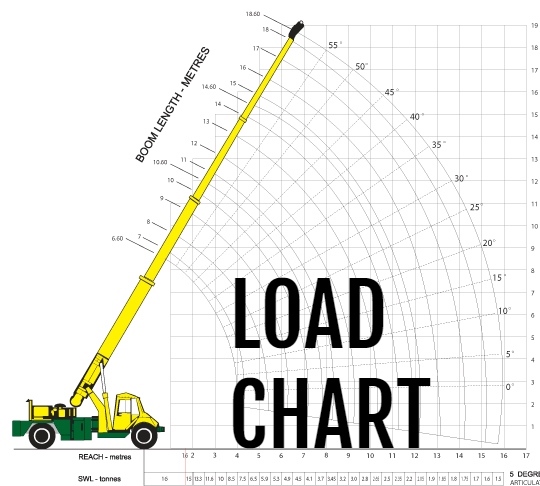
Indications in the cab according to the radius and load at the moment.A direct indication in the cab of actual weight hoisted or a means of determining this by referencing a weight indication to crane ratings posted and visible to the operator, except that the use of a dynamometer or simple scale alone will not meet this requirement.OSHA has published a wide variety of rules and regulations dictating where and how load charts must be displayed and what information they must contain.Īccording to OSHA’s regulations, load charts must provide: The same requirements are demanded of all project supervisors and managers. OSHA requires crane operators to consult load charts before attempting a lift, and crane operators are required to know how to interpret load charts. Load Charts Rules and Regulationsįor the above reason, Occupational Safety and Health Administration -commonly known as OSHA - considers load charts critical. If the boom length, lift angle, and lift weight are not measured properly, the crane may fail. An experienced crane engineer can interpret these factors in light of present circumstances to determine the viability of a given lift. Most load charts include sections on boom length, boom angle, and lift range in addition to information on other important variables. It gives a brief overview of the crane’s capabilities and goes over the cranes’ features and characteristics, including the loads it can handle given certain specifications - lift height, lift angle, etc. Simply put, a load chart is a summary of what a crane can and cannot do. However, learning basic information about a crane’s utility makes the choice easier, and that starts with knowing how to interpret a crane’s load chart. Indeed, selecting the right crane from the dizzying array of options can be challenging.

Additionally, some cranes, like tower cranes, are designed to handle lifts hundreds of feet in the air, whereas some are made specifically for heavy lifts weighing thousands of tons.

There are all-terrain cranes, prized for their versatility, as well as rough terrain cranes, built for rugged worksites. The sheer number of cranes available can make selecting the right one for the job intimidating.

Today, the crane industry - employing thousands of people - is worth billions of dollars.Ĭranes are very complex machinery that incorporate some of the latest technology, and operating a crane is no rudimentary task, as it requires a good deal of training and know-how - not to mention a steady hand.Ĭranes are used in a variety of different industries, creating a robust rental market. Cranes have been around in one form or another for thousands of years, and have been pivotal to modern construction and the structure built in our society.


 0 kommentar(er)
0 kommentar(er)
